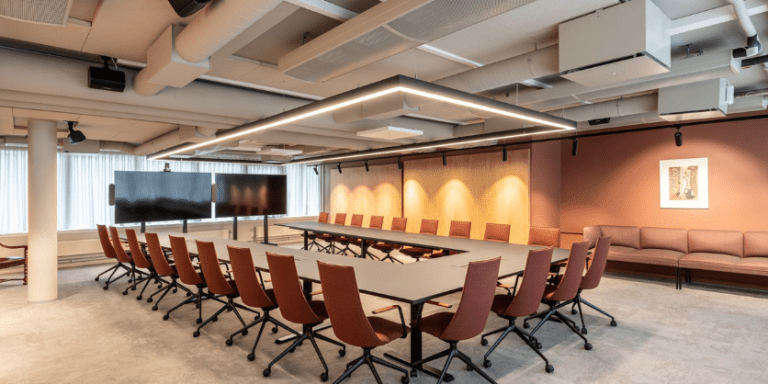OU Students Drive Lighting Retrofit with Eco Challenge

According to an article in Ohio Today, Ohio University students are looking up, to their lights, to create a more sustainable future … and benefiting from it today.
For students in one Ohio University classroom, sustainability is not just a concept . It’s a mission that is actively pursued.
The Eco Challenge, a bold initiative embedded in the curriculum, empowers students to drive real-world environmental impact through hands-on projects. This multidisciplinary program is integrated across three courses—Leadership in Practice, Energy Engineering Senior Design, and Eco-Challenge—connects students from the College of Business and the Russ College of Engineering and Technology.
The Eco Challenge has evolved into a platform for innovation. With ongoing support from the university’s Office of Sustainability, it enables students to align their projects with the school’s long-term environmental goals.
An example of student-led ingenuity emerged during a recent Eco Challenge held November 24, 2024. Team Six—comprised of students Avery Murdock, Kiley Scanlon, Nathan Jennings, Espen Elliot, Manar Al Ghailani, and Mazin Al Jahwari—earned top honors for their impactful lighting retrofit proposal targeting the University Service Center at 49 Factory Street in Athens.
Constructed in 1966, the Service Center houses Maintenance, Operations, and Grounds Services offices. The team’s project aimed to reduce energy consumption by replacing 610 outdated fluorescent bulbs (17 watts each) with 514 modern LED bulbs (9 watts each). The result? A projected 50% reduction in energy usage and an annual savings of approximately $1,419 in electricity costs.

However, the project was not a simple bulb-for-bulb swap. The students quickly discovered that retrofitting the existing lighting infrastructure would be essential. This introduced unexpected complexity—requiring modifications to electrical systems and careful logistical planning. But rather than deter the team, these challenges provided valuable experiential learning, reinforcing the real-world demands of energy management projects.
Instrumental to the project’s success was Vince Weatherstein, Director of Energy Management at Ohio University. He not only advised the students but also championed their vision. “It’s great that we have a program that allows students to develop solutions based on real-life challenges,” Weatherstein said. “The Eco Challenge prepares students for experiences they will face after graduation.”
For Weatherstein and the Facilities team, the decision to implement Team Six’s proposal was clear. The LED upgrade offered significant energy savings with a modest upfront cost of $5,944, ensuring a fast return on investment.
Beyond the numbers, the project delivered immediate benefits: brighter, more efficient lighting has improved working conditions for employees while lowering the building’s overall energy footprint.
Team Six’s comprehensive risk assessment—factoring in electrical malfunctions, budget uncertainties, and potential disruptions—demonstrated a mature, professional approach to project planning. Their successful navigation of these challenges is a testament to the Eco Challenge’s value in cultivating future-ready sustainability leaders.
Thoughts
- Granted it was a small project, but if six students can see the opportunity, consider the potential for so much more! How many other opportunities exist like this in your market? With a slow market, this is a model that every electrical contractor can use to reach out to companies to generate business. Add in a utility rebate and the investment for a company could be negligible.
- For local electrical distributors, lighting agents, electrical contractors … perhaps a recruitment opportunity? Or at least an opportunity to connect with the school for to be involved with the Eco Challenge?
More information about the Eco Challenge









